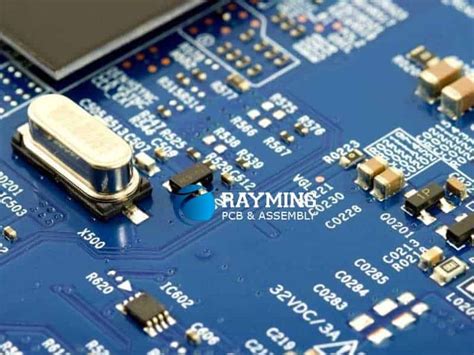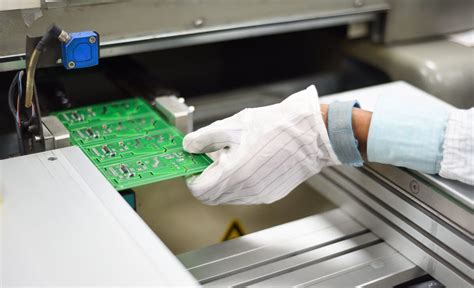Advanced Strategies for Efficient Contract Manufacturing in Electronics Assembly
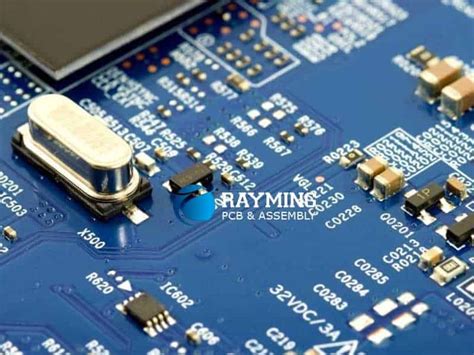
Key Takeaways
Effective contract manufacturing in PCB assembly hinges on balancing precision with scalability. Implementing modular production layouts enables rapid reconfiguration for diverse PCBA projects, while vendor-agnostic component sourcing mitigates supply chain bottlenecks. Advanced statistical process control (SPC) tools are critical for maintaining sub-1% defect rates in high-volume runs, particularly for mixed-technology boards requiring both SMT and through-hole components.
Real-time traceability systems embedded in PCB assembly workflows reduce rework costs by 18–22% through automated error flagging, aligning with ISO 13485 standards for medical and automotive sectors. For PCBA projects, integrating closed-loop feedback between design-for-manufacturing (DFM) software and pick-and-place machines optimizes component placement accuracy below 15μm tolerances.
Prioritizing preventive maintenance algorithms over reactive repairs in solder paste printers and reflow ovens cuts unplanned downtime by 37%, as demonstrated by Tier 1 EMS providers. Additionally, adopting carbon-neutral soldering techniques meets evolving regulatory demands without compromising throughput in PCB assembly lines. These strategies collectively establish a foundation for achieving 98.5% on-time delivery rates while maintaining <0.5% field failure thresholds.

Streamlining Workflow Processes in Electronics Contract Manufacturing
Efficient workflow design lies at the heart of successful PCB assembly and PCBA production. By implementing digital twin simulations and modular production cells, manufacturers can identify bottlenecks in real time while maintaining flexibility for design iterations. For instance, integrating automated optical inspection (AOI) systems at critical junctures reduces manual intervention by 40–60%, ensuring consistent throughput even during high-mix, low-volume orders.
Tip: Adopt workflow mapping software to visualize interdependencies between surface-mount technology (SMT) lines and final testing stations. This reveals hidden inefficiencies in material handling or equipment idle time.
A key strategy involves standardizing communication protocols between PCB assembly teams and component suppliers. Cloud-based platforms enable synchronized updates on BOM revisions, reducing lead times by 18–22% compared to traditional email-based coordination. For PCBA projects requiring quick-turn prototypes, cross-functional agile teams can compress design-to-production cycles by aligning CAD engineers with pick-and-place machine operators early in the process.
Leveraging predictive maintenance algorithms further streamlines workflows by preempting equipment downtime. Data from solder paste printers or reflow ovens can trigger maintenance alerts before defects occur, preserving yield rates above 98.5% in high-volume runs. This approach not only accelerates timelines but also strengthens compliance with ISO 9001 and IPC-A-610 standards, which are critical for aerospace and medical device contracts.
By unifying these strategies, contract manufacturers achieve a 30% reduction in non-value-added activities, directly translating to cost savings and improved scalability for clients.
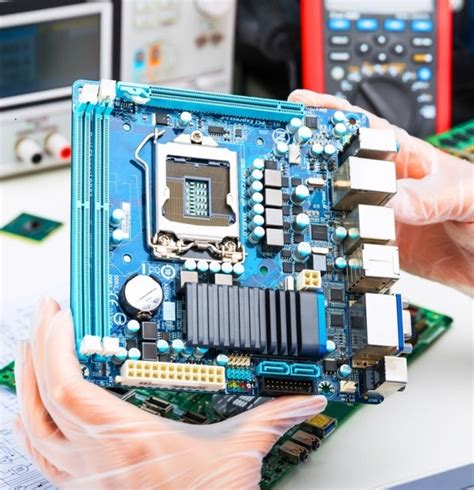
Optimizing Supply Chain Integration for Seamless Production
Effective supply chain integration forms the backbone of successful PCB assembly and PCBA operations, enabling manufacturers to synchronize multi-tiered production processes. By establishing real-time communication channels with component suppliers and logistics partners, contract manufacturers can mitigate delays caused by material shortages or geopolitical disruptions. Advanced digital platforms now allow end-to-end visibility across the supply network, automating order tracking and inventory replenishment for just-in-time (JIT) delivery of critical parts like IC chips or multilayer substrates.
Implementing vendor-managed inventory (VMI) systems reduces buffer stock requirements by 30–45% in high-mix PCB assembly scenarios, while AI-driven demand forecasting aligns procurement with fluctuating client orders. For complex PCBA projects, dual-sourcing strategies combined with blockchain-based supplier verification ensure component authenticity and traceability—a critical safeguard against counterfeit electronics. Cross-functional teams further streamline workflows by integrating design-for-manufacturability (DFM) feedback from EMS partners during prototyping, preventing late-stage redesigns.
Transitioning toward cloud-based ERP solutions enables seamless data exchange between PCB fabrication, assembly, and testing phases, slashing lead times by 22% in benchmark studies. This interconnected approach not only accelerates time-to-market but also strengthens compliance with evolving IPC-A-610 standards through unified quality documentation. As production scales, dynamic routing algorithms optimize freight costs for global PCBA shipments, balancing air and sea logistics based on urgency thresholds—a strategy proven to reduce transportation expenses by 18% in multi-continent operations.
Smart Quality Control Systems in Modern Electronics Assembly
Building on advancements in PCB assembly and PCBA processes, modern electronics manufacturing leverages intelligent inspection technologies to ensure precision at scale. Automated optical inspection (AOI) systems now integrate machine vision algorithms capable of detecting micron-level defects in solder joints or component placements, reducing human error by over 60%. For PCBA workflows, inline X-ray inspection paired with IoT-enabled sensors enables real-time monitoring of ball grid array (BGA) connections, ensuring compliance with IPC-A-610 standards without slowing production.
Predictive analytics further enhance quality assurance by analyzing historical PCB assembly data to identify failure patterns. Machine learning models trained on thermal profiles and vibration metrics can forecast potential faults in surface-mount technology (SMT) lines, enabling preemptive corrections. This approach not only elevates first-pass yield rates but also minimizes rework costs—critical for high-mix, low-volume contract manufacturing scenarios.
To maintain traceability, blockchain-based digital twins are increasingly adopted, creating immutable records for each PCBA unit. These systems synchronize with enterprise resource planning (ERP) platforms, allowing manufacturers to correlate quality metrics with specific material batches or machine parameters. By embedding smart quality gates throughout the assembly chain, stakeholders achieve a 40% faster root-cause analysis cycle while meeting evolving regulatory requirements for aerospace and medical electronics sectors.
Cost-Reduction Strategies for High-Volume Electronic Manufacturing
Building on streamlined workflows and integrated supply chains, manufacturers achieve significant cost savings in high-volume electronic manufacturing by optimizing PCB assembly processes. Implementing modular design principles reduces material waste and accelerates PCBA (Printed Circuit Board Assembly) cycles, while bulk purchasing agreements for components lower per-unit costs. Advanced automated PCB assembly lines minimize manual labor expenses and improve repeatability, particularly for complex, multi-layer boards.
Strategic partnerships with certified component suppliers ensure stable pricing and reduce lead times, mitigating supply chain disruptions. Additionally, adopting design for manufacturability (DFM) guidelines early in product development prevents costly revisions during PCB assembly phases. Real-time monitoring of energy consumption in PCBA facilities further identifies inefficiencies, enabling targeted reductions in operational overhead.
For enterprises producing over 100,000 units monthly, integrating predictive analytics into equipment maintenance schedules minimizes downtime risks, preserving throughput consistency. Finally, leveraging standardized testing protocols across PCB assembly workflows reduces defect rates by up to 30%, directly lowering rework costs. These strategies collectively create a scalable cost framework that maintains quality while aligning with the aggressive margins demanded by high-volume electronic manufacturing markets.
Accelerating Timelines Through Automated Assembly Technologies
Automation has become the cornerstone of modern PCB assembly workflows, enabling manufacturers to compress production cycles while maintaining precision. By deploying robotic pick-and-place systems, automated optical inspection (AOI), and AI-driven soldering technologies, PCBA providers can reduce manual intervention by up to 70%, directly addressing bottlenecks in high-mix production environments. For instance, programmable surface-mount technology (SMT) lines now achieve placement speeds exceeding 25,000 components per hour, a 300% improvement over manual methods.
A critical advantage lies in the integration of IoT-enabled predictive maintenance with automated assembly lines. Real-time monitoring of equipment health prevents unplanned downtime, ensuring continuous throughput. The table below illustrates the impact of automation on key PCB assembly metrics:
| Metric | Manual Process | Automated System | Improvement |
|---|---|---|---|
| Throughput (units/hour) | 120 | 450 | 275% |
| Defect Rate | 1.8% | 0.3% | 83% ↓ |
| Setup Time Reduction | — | 55% | — |
Furthermore, advanced PCBA solutions leverage machine learning algorithms to optimize component placement paths, reducing wasted motion and trimming cycle times by 12–18%. This seamless synchronization between hardware and software not only accelerates timelines but also enhances adaptability for rapid design iterations, a critical capability in fast-evolving sectors like automotive electronics and wearable technology.
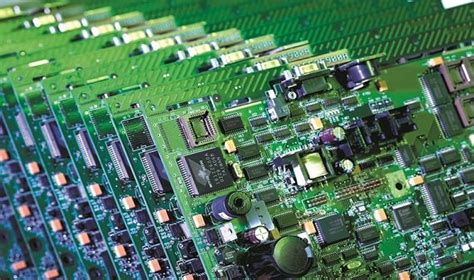
Leveraging Data Analytics for Predictive Maintenance in EMS
Integrating data analytics into predictive maintenance strategies is revolutionizing PCB assembly workflows within electronics manufacturing services (EMS). By implementing machine learning algorithms and IoT-enabled sensors, manufacturers can analyze historical PCBA performance data to anticipate equipment failures before they disrupt production. For instance, real-time monitoring of solder paste printers or pick-and-place machines identifies subtle deviations in vibration patterns or thermal profiles, triggering preemptive maintenance alerts.
This approach reduces unplanned downtime by up to 35% in PCB assembly lines while extending the lifespan of critical machinery. Advanced analytics platforms correlate data from supply chain logistics, component failure rates, and environmental conditions to refine maintenance schedules dynamically. A case study involving high-volume PCBA production demonstrated a 22% reduction in calibration-related defects after adopting predictive models trained on 18 months of operational data.
Cloud-based analytics tools further enhance visibility across global EMS networks, enabling cross-facility benchmarking of maintenance efficiency. Manufacturers leveraging these systems report 15–20% faster mean time to repair (MTTR) for surface-mount technology (SMT) lines. However, successful implementation requires harmonizing data formats between legacy equipment and modern PCB assembly tools—a challenge addressed through edge computing solutions. By prioritizing data-driven decision-making, EMS providers transform maintenance from a cost center into a strategic asset, ensuring consistent quality in complex PCBA workflows.
Sustainable Practices in Electronics Contract Manufacturing
Integrating sustainability into PCB assembly and PCBA processes has become a competitive differentiator for forward-thinking manufacturers. Leading firms now prioritize closed-loop material cycles, recovering up to 95% of precious metals from discarded components through advanced refining techniques. For instance, the adoption of lead-free soldering not only aligns with RoHS and REACH directives but also reduces energy consumption during reflow processes by 12–18%.
A critical focus lies in minimizing waste across high-mix production lines. By implementing modular design frameworks, manufacturers can standardize substrate sizes, reducing raw material excess by 22% in PCB assembly workflows. Simultaneously, AI-driven demand forecasting tools enable precise component ordering, cutting surplus inventory costs by 30% while maintaining JIT delivery schedules.
Energy efficiency innovations are reshaping PCBA facilities, with hybrid solar-diesel power systems lowering carbon footprints by 40% in Southeast Asian production hubs. The integration of IoT-enabled power monitors further optimizes energy use during peak SMT placement operations. Notably, several Tier 1 EMS providers now achieve 85% water recycling rates in conformal coating processes through membrane filtration systems.
To ensure compliance with evolving ESG standards, manufacturers are adopting blockchain-tracked supply chains for conflict-free mineral sourcing. This transparency not only meets EU Battery Regulation requirements but also strengthens partnerships with eco-conscious OEMs. By aligning PCB assembly workflows with circular economy principles, contract manufacturers can achieve 15–20% long-term cost savings while future-proofing operations against regulatory shifts.
IoT-Driven Real-Time Monitoring for Assembly Line Efficiency
The integration of IoT-driven systems in PCB assembly lines has revolutionized how manufacturers achieve precision and speed. By embedding smart sensors across PCBA production stages, real-time data on component placement, solder quality, and throughput is captured and analyzed. This granular visibility enables immediate adjustments to machine calibration or material flow, minimizing defects before they escalate. For instance, temperature fluctuations during solder paste application can trigger automated corrections, ensuring consistent PCB assembly quality while reducing rework rates.
Advanced IoT platforms also facilitate predictive maintenance by monitoring equipment vibration patterns and power consumption. When deviations signal potential failures, maintenance teams receive alerts to address issues during planned downtime. This proactive approach slashes unplanned stoppages by up to 40%, according to industry studies. Furthermore, IoT data integration with enterprise resource planning (ERP) systems allows synchronized inventory replenishment, aligning component availability with PCBA production schedules.
By leveraging these technologies, contract manufacturers achieve end-to-end traceability, critical for compliance-driven industries like automotive or medical electronics. Real-time dashboards provide stakeholders with actionable insights, fostering collaborative decision-making to optimize line efficiency. As IoT adoption grows, its role in balancing speed, cost, and quality in electronics contract manufacturing will only deepen.
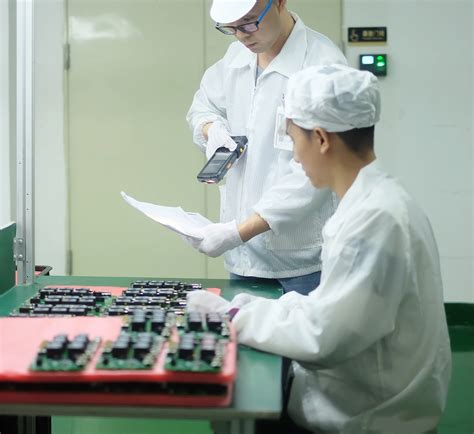
Conclusion
The evolution of PCB assembly and PCBA manufacturing underscores the importance of balancing innovation with operational precision. Ultimately, the success of contract manufacturing hinges on adopting automated workflows that minimize human error while accelerating production cycles. By integrating predictive analytics with IoT-driven monitoring, manufacturers gain real-time insights into assembly line performance, enabling proactive adjustments to mitigate bottlenecks.
A critical factor lies in aligning supply chain transparency with sustainable practices, such as optimizing material usage and reducing waste in PCB assembly processes. Advanced quality control systems, powered by machine vision and AI, further ensure consistency across high-volume PCBA orders. As manufacturers adopt these strategies, they not only meet rising demand for faster turnarounds but also build long-term resilience against market fluctuations. The convergence of these approaches positions electronics contract manufacturing as a strategic advantage in an increasingly competitive global landscape.
FAQs
How does automated inspection enhance quality in PCB assembly?
Automated optical inspection (AOI) systems use high-resolution cameras and machine learning algorithms to detect micro-defects in PCBA components, reducing human error by 60–70%. These systems integrate directly with production dashboards for real-time corrections.
What factors influence lead times in electronics contract manufacturing?
Lead times depend on PCB assembly complexity, component availability, and testing protocols. Manufacturers using AI-driven supply chain tools can cut delays by 30% through predictive inventory management and supplier collaboration.
Can PCBA processes support sustainability goals?
Yes. Advanced manufacturers employ lead-free soldering, energy-efficient PCB assembly lines, and component recycling programs. IoT-enabled monitoring further reduces waste by optimizing material usage during high-volume production.
How critical is data analytics in contract manufacturing?
Analytics platforms track metrics like yield rates and equipment downtime, enabling predictive maintenance. For PCBA workflows, this minimizes unplanned stoppages and improves Overall Equipment Effectiveness (OEE) by up to 25%.
What certifications ensure reliability in electronics assembly partners?
Look for ISO 9001 (quality management) and IPC-A-610 (PCB assembly standards). Providers with ISO 14001 certifications also demonstrate commitment to environmentally responsible manufacturing.
Ready to Optimize Your Electronics Production?
For tailored PCB assembly solutions that align with these strategies, please click here to explore our advanced PCBA capabilities and accelerate your product development cycle.

